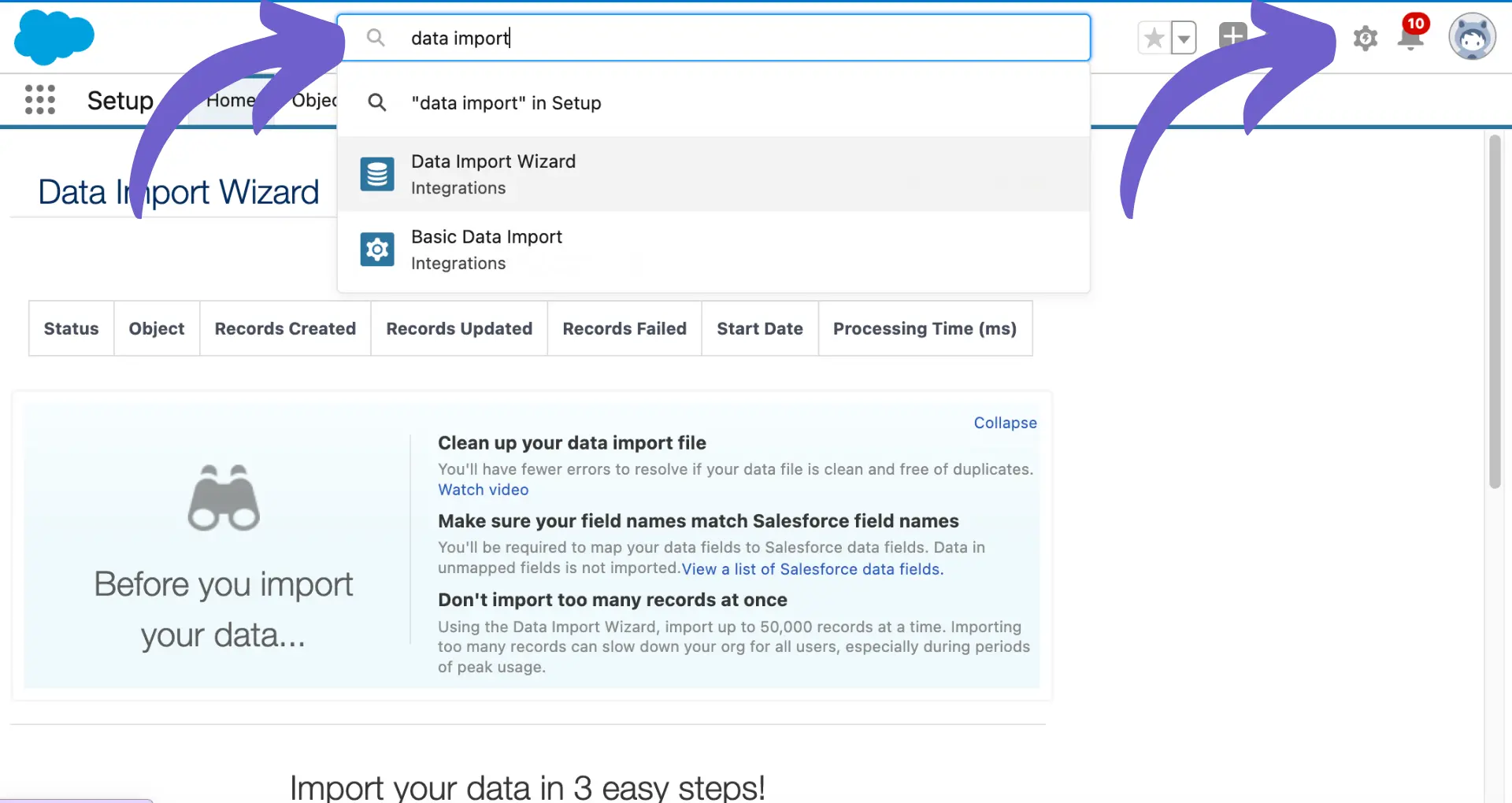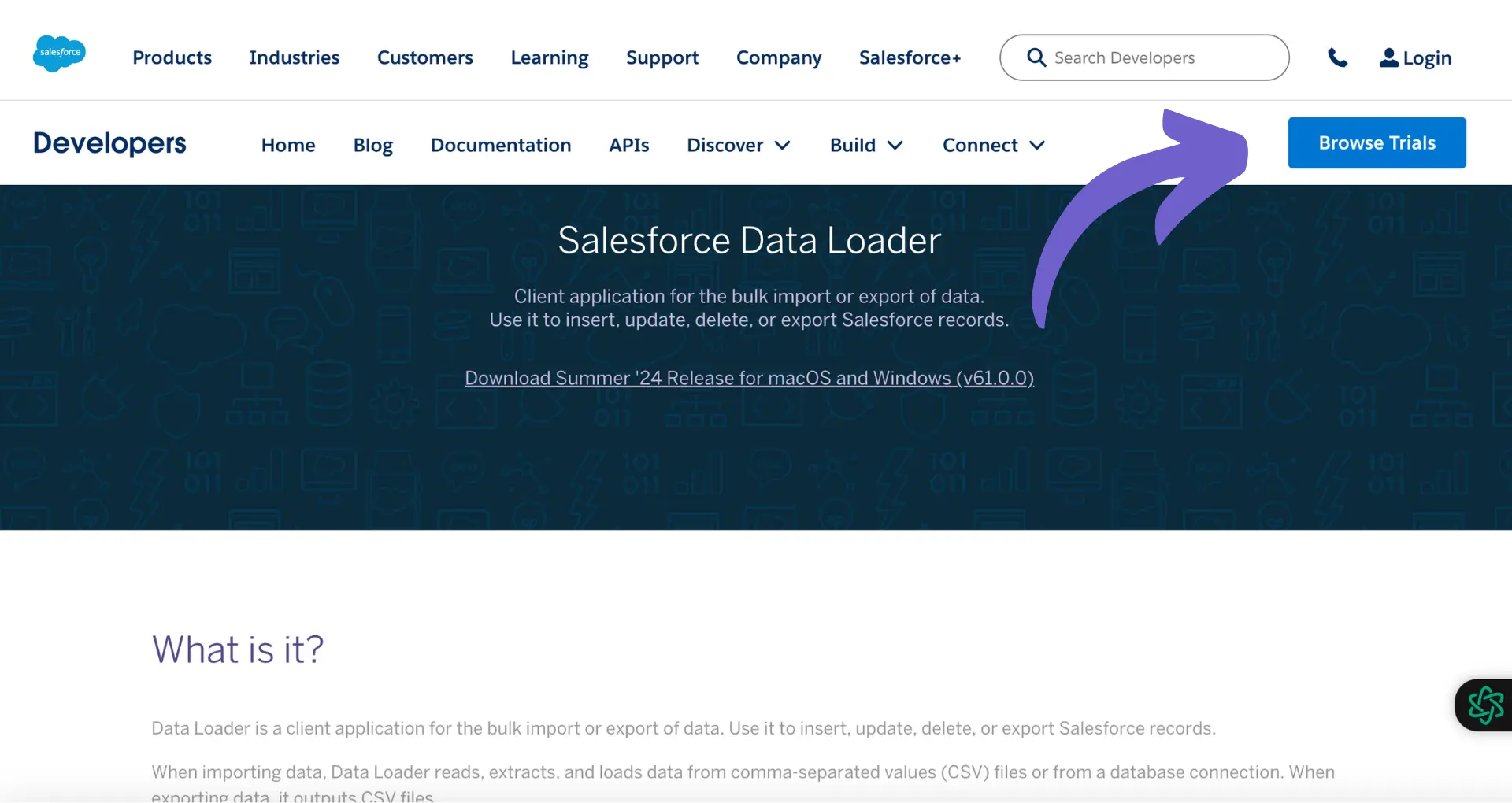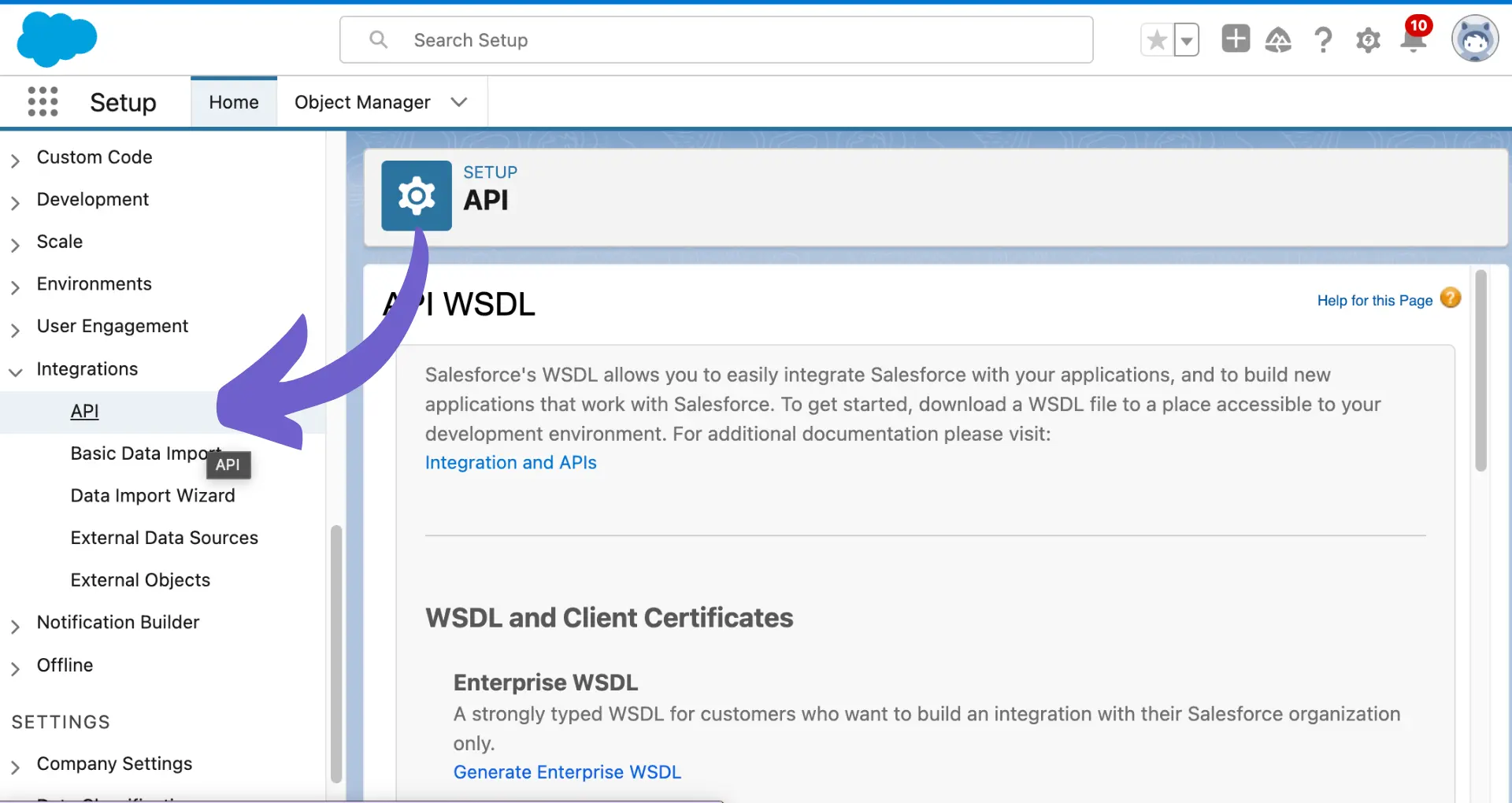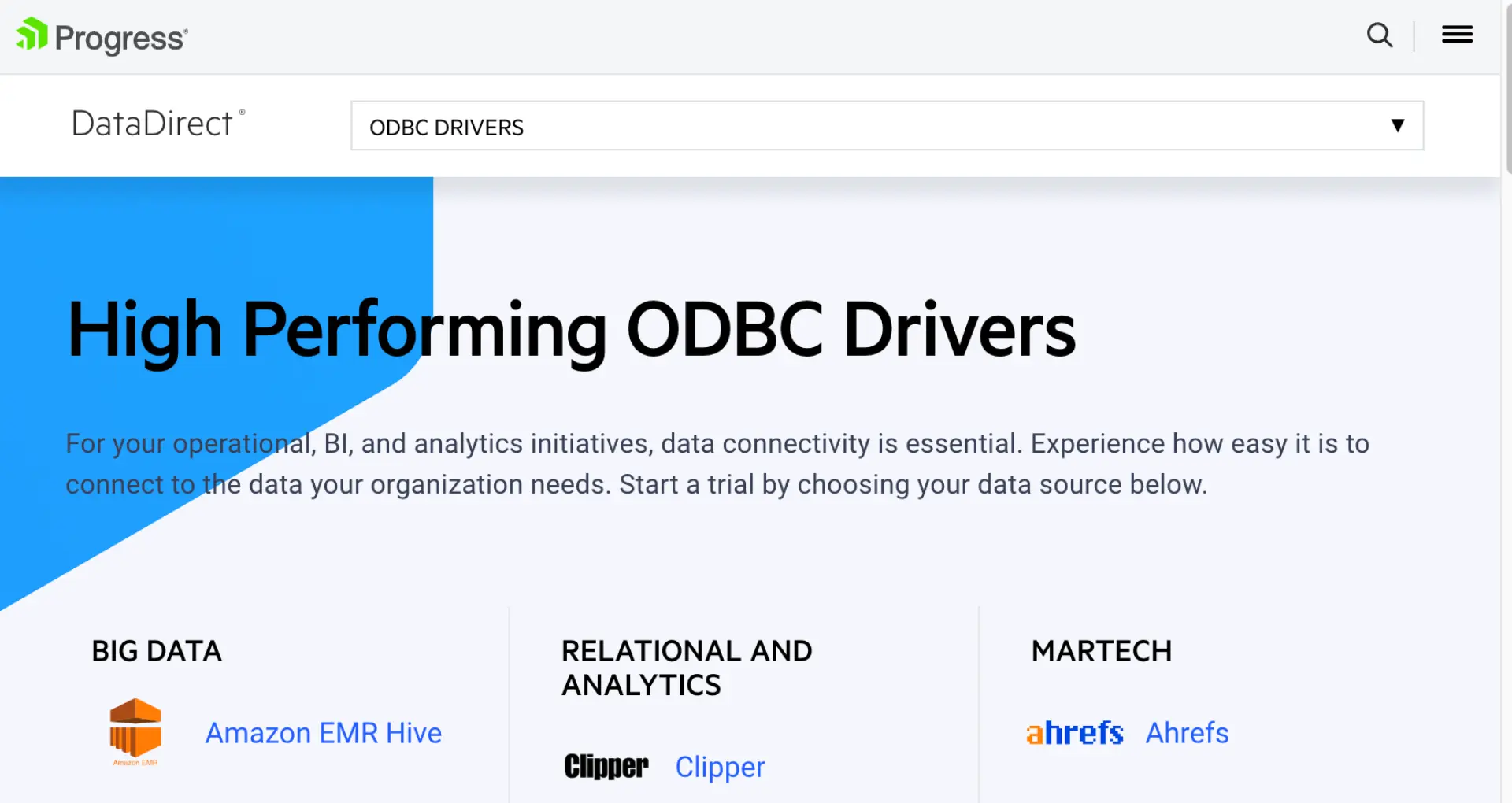Import data into Salesforce using tools like Data Import Wizard or Data Loader.
By the way, we're Bardeen, we build a free AI Agent for doing repetitive tasks.
If you're managing Salesforce data, you might love Bardeen's AI for sales. It helps automate data imports and keeps your CRM up-to-date effortlessly.
How to Import Data into Salesforce
Importing data into Salesforce is a crucial task for administrators and developers to ensure that the system reflects the most current and comprehensive information about customers, sales, and interactions. Salesforce provides several tools and methods to facilitate data import from various sources, including Excel and CSV files, external databases, and other Salesforce orgs. This guide will cover the primary methods and tools available for importing data into Salesforce, including the Data Import Wizard, Data Loader, and API-based methods.
Automate your Salesforce data import process with Bardeen and keep your CRM up-to-date effortlessly. Download Bardeen now.
Salesforce Data Import Wizard
The Salesforce Data Import Wizard is an intuitive tool accessible directly within Salesforce, designed for importing data for standard objects like accounts, contacts, leads, and custom objects. It supports importing up to 50,000 records at a time and provides a user-friendly interface for mapping data fields from your import file to Salesforce fields.
- Prepare your data file in CSV format, ensuring it adheres to Salesforce's data validation requirements and matches Salesforce field names.
- Access the Data Import Wizard from Setup by entering 'Data Import Wizard' in the Quick Find box and selecting it.
- Choose the type of data you're importing (e.g., leads, contacts), specify the operation (insert, update, upsert), and upload your CSV file.
- Map your data fields to the corresponding Salesforce fields. The wizard attempts to auto-map fields, but you can manually adjust mappings as needed.
- Review your settings and start the import. Salesforce will notify you via email once the import is complete.

Salesforce Data Loader
The Salesforce Data Loader is a more powerful tool compared to the Data Import Wizard, suitable for importing larger datasets (up to 5 million records) and for objects not supported by the Wizard. It can be operated through a user interface or command line for automated imports using API calls.
- Determine if your system requires the 32-bit or 64-bit version of Data Loader and download it from Salesforce.
- Install Data Loader and configure your login credentials to connect to Salesforce.
- Prepare your CSV import file, ensuring it matches Salesforce's data structure and field names.
- Use Data Loader to insert, update, upsert, delete, or export records. Map your CSV fields to Salesforce fields within the tool.
- Execute the import operation and monitor the process through the Data Loader interface. Salesforce will provide a success and error log for review.

Salesforce API Import Data
For more complex or automated data import needs, Salesforce offers various APIs, including the Bulk API for large datasets and the REST API for real-time integration. Using Salesforce APIs requires programming knowledge and is typically performed via custom scripts or integration tools.
- Choose the appropriate Salesforce API based on your data volume and integration requirements.
- Develop your import script or application using Salesforce's API documentation as a guide.
- Authenticate with Salesforce and execute your data import operation, handling any errors or exceptions programmatically.

Discover advanced Salesforce integration and workflow automation to save time and increase impact for SDRs and Sales Ops teams.
Regardless of the method chosen, it's essential to prepare your data carefully, ensuring it's clean, deduplicated, and formatted correctly to match Salesforce's data model. Testing your import with a small dataset before executing a full import can help identify and resolve any issues.
Import Salesforce Data into Excel
While importing data into Salesforce is a common requirement, there are scenarios where you might need to import Salesforce data into Excel. This can be achieved using the Progress DataDirect for ODBC Salesforce driver.

- Determine your Excel version (32-bit or 64-bit) and download the corresponding Progress DataDirect Salesforce ODBC driver.
- Install and configure the driver on your system, creating a DSN (Data Source Name) for your Salesforce connection.
- In Excel, use the 'Get Data' feature to connect to Salesforce via the ODBC driver, authenticate, and import the desired Salesforce data into your Excel workbook.
This method allows for dynamic data analysis and reporting on Salesforce data directly within Excel.
Automate Your Salesforce Data Import with Bardeen
Importing data into Salesforce can significantly enhance your CRM's effectiveness by keeping your data up-to-date and ensuring your team has access to the latest customer and sales information. While manual data importation is a viable route, automating this process can save time and reduce errors, enabling your team to focus on more strategic tasks.
With Bardeen, importing data into Salesforce can be automated, streamlined, and error-free. Here are some automation examples that can be built using Bardeen's playbooks:
- Create a Salesforce account from a Crunchbase organization: This playbook automates the creation of Salesforce accounts using data scraped from Crunchbase, facilitating seamless integration of valuable business insights into your CRM.
- Create a new Salesforce contact: Simplify the addition of new contacts to your Salesforce CRM by automating the process, allowing your sales team to focus on building relationships rather than data entry.
- Create a Salesforce contact from a LinkedIn profile: This playbook enables you to automatically create Salesforce contacts from LinkedIn profiles, enriching your CRM with professional data and potential leads.
These playbooks are just the tip of the iceberg when it comes to automating your Salesforce data management. By leveraging Bardeen, you can ensure that your CRM data is always current, accurate, and comprehensive. Start automating today by downloading the Bardeen app at Bardeen.ai/download.







.svg)
.svg)
.svg)
